Brian Clegg's Blog, page 72
May 18, 2015
Young People's Science Writing
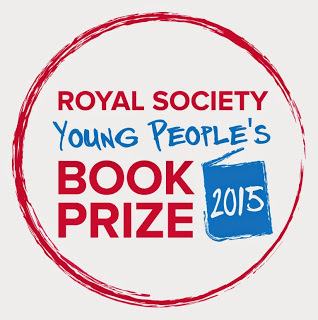 When I relaunched www.popularscience.co.uk a while ago because I was having so much trouble with WordPress, I made the difficult decision of dropping children's science books from the site. Although we'd tried to cover them in the past, they always took second place, and I felt we couldn't do them justice.
When I relaunched www.popularscience.co.uk a while ago because I was having so much trouble with WordPress, I made the difficult decision of dropping children's science books from the site. Although we'd tried to cover them in the past, they always took second place, and I felt we couldn't do them justice.One side effect of this is that, while the site continues to cover the adult Royal Society Prize for Science Books, the prize for books aimed at young people is now ignored - so I thought I'd give it a mention here.
The shortlist has just been announced with suitably impressive sounding contenders:
365 Science Activities, Various Authors (Usborne)
The judges said: “Children are hard-wired to do experiments, to handle things with their own hands, to get a feel for how things work and why they work. This book is a wonderful resource for children who want to create their own experiments and find out more about how everything around them works.”
Frank Einstein and the Antimatter Motor, by Jon Scieszka, illustrated by Brian Biggs (Amulet)
The judges said: “It’s a great balance of English and Science and if you are interested in either of those things, this is really the book to read this year.”
Jake’s Bones, by Jake McGowan-Lowe (Octopus Books)
The judges said: “This book has a wonderful personal feel. It’s the story of one boy’s collection and his own fascination with bones. It will push children not just to learn from a book but also to go out and explore the countryside.”
Night Sky Watcher, by Raman Prinja (QED Publishing Inc.)
The judges said: “Night Sky Watcher is a great introduction to stars and will definitely get you out looking for them. It introduces you to well-known stars and constellations like The Plough and Leo and then encourages you to star hop to planets and galaxies you may not have come across before, all the while explaining our amazing universe.”
Tiny: The Invisible World of Microbes, by Nicola Davies (Walker Books)
The judges said: “You might not have even heard of microbes before reading this book however it brings to life beautifully what they are and why they are so important. It’s also an absolutely gorgeous picture book.”
Utterly Amazing Science, by Professor Robert Winston (DK)
The judges said: “It’s a lovely book. The pop-ups beautifully illustrate a whole wide range of science from atomic science to volcanic eruptions. We also think the hand-on experiments it suggests will be very popular with a young audience.”
The winner will be announced in November.
As it's always interesting to know who is involved, the judges this year are:Professor John Burland FRS – Emeritus Professor of Soil Mechanics, Department of Civil and Environmental Engineering, Imperial College LondonDr Stephanie Schorge – Royal Society University Research Fellow in the Institute of Neurology, University College LondonKatie Thistleton – Television presenter and host of the CBBC Book ClubDr Shaun Long – English teacher at Royal Society Associate School, Bodmin College, CornwallJulia Eccleshare – Writer, broadcaster and lecturer, and the Guardian's children's books editor
Published on May 18, 2015 01:41
May 15, 2015
Beeb terror
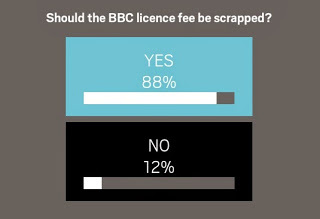 It looks like I'm not alone in this (admittedly
It looks like I'm not alone in this (admittedlyunlikely to be unbiassed) poll from MetroOne of the first front page stories about the new government was one that suggested that the BBC licence fee was under threat, as John Whittingdale, the new secretary of state for culture, is known to have concerns about it. Some of the headlines were along the lines of 'War on the BBC!'
This is arguably overblown, but there is no doubt that in the decennial (there's a word you don't get a chance to wheel out too often) review of the BBC's charter, starting soon, there will be various aspects of its work and funding that are challenged. Whether or not this is because the Conservatives and the right-wing media traditionally consider the BBC to have a left-wing bias, it is going to happen.
I ought to spend a moment on that bias claim. It's a classic example of something that is both true and isn't, as things can be in the real world. As this Guardian piece points out, there are individuals in the BBC who, if anything. have a right wing bias, but I think the feeling comes across to anyone who has had exposure to large numbers of BBC programme makers - there is certainly a general atmosphere suggestive of the same kind of mild liberal leftism that dominates academia. In fact, it's probably almost a fact of life in this kind of organization.
What we should avoid is falling into the same trap that NHS supporters often fall into, of assuming that there is no room for improvement and that any change is bad. The fact is, the BBC could be a lot better than it is, and it is important in a multi-channel, multi-platform world that we examine what it does and make sure that it is doing what is appropriate for a public service broadcaster. To get one bugbear out of the way straight away, I am not suggesting advertising. We don't need it - Netflix demonstrates that very clearly.
The BBC has plenty of channels now - remember there's BBC News and BBC Parliament as well CBeebies and the four main channels. It would be perfectly practical to consolidate news and clearly identified public service non-fiction broadcasting on, say 2 channels which remained free to air, funded from taxation and ring-fenced against political interference, and to move the other channels to being subscription-based, doing away with the licence fee entirely. Apart from anything else, this would save a significant amount of money in the whole licence fee collecting and enforcing scheme, as well as avoiding the pain that those poor souls who decide not to have a TV go through when the enforcers don't believe them. (A similar approach could be taken for radio, though the cost there is so relatively small, and there are so few radio channels with direct competitors, that the whole thing could arguably remain public service.)
I have no problem at all with the BBC's excellent facilities and staff being used to produce entertainment, provided it is on a subscription basis - and as long as that subscription is comparable with, say, the price of Netflix at around £6 to £9 a month, I see no reason why it wouldn't be paid by most of the viewing public, as the BBC still has a huge range of very popular shows.
It also would be a good point to explore just what the value is of the BBC's various extended arms and how they should operate. For instance, BBC America makes the excellent series Orphan Black in Canada. The third season of this started showing in the US in April - yet there isn't even a date for it to be shown in the UK. This is ridiculous. Just because it's made by BBC America shouldn't put the BBC's core audience at a disadvantage. Priorities need to be be clear, and they should be the UK.
I honestly don't think future of the BBC is gloomy, as long as you can accept that change isn't always bad.
Published on May 15, 2015 00:51
May 14, 2015
Montar Car Phone Mount review
[image error]
A couple of times recently, for boring technical reasons, I haven't been able to use my Sat Nav and instead used my phone for GPS navigation. The software was fine, but the problem I faced was keeping the thing somewhere it could pick up GPS satellites and I could see it if necessary.
Luckily, one of my daughters had left an old car phone mount lying around the house. The theory was good - a sprung clamp held the phone in place and the thing attached to the windscreen with a suction cup. But the practice wasn't so good. Because the arm was long, the phone wobbled up and down with every little bump we came across, and though all seemed well for about an hour, the mount would then, at random (and usually during a difficult manoeuvre like going around a roundabout) fall off the windscreen, sending my precious iPhone plunging towards the floor and my leaving me navigationally challenged.
Dismissing the old device, I've now got hold of something significantly better. Apart from anything, the Montar mount looks stylish and is well finished. But most importantly, it has so far stayed in place despite everything I've thrown at it. I don't usually leave a mount in place all the time, but as an experiment I left this on all day, then came back to it in the evening, inserting the phone for a two hour drive - and it stayed suitably stuck. In fact, so stuck that I couldn't get it off initially and had to wait until the sun warmed the car up before I could move it.
This was doubly impressive because, unlike the old kit, this one was fixed to the dashboard rather than the window. Like many modern dashboards, mine, on a Hyundai i30, presents serious challenges for any would-be attachment. The dashboard surface is curved, not flat, and textured too. I had assumed that getting a suction cup to fix would be impossible. But the Montar mount has a sticky gel bottom surface on the sucker than gave it a surprising grip on that unlikely surface. (If all else fails, it comes with a stick-on smooth disc to leave on your dash, but I don't like sticking things to my car, and I didn't need it for my dashboard.) I ought to say that looking at the Amazon reviews one or two people haven't had the same success, so there may be some car designs which are beyond it.
That apart, it's a 'no news is good news' report. It did its job. The phone stayed where it should, didn't wobble about, didn't fall off and was easily accessible. Because the mount was so solid I could insert the phone or remove it with one hand, without risking dislodging the whole thing.
It's not the cheapest car mount for a phone, but certainly the most impressive I've seen. Apparently I may need to 'wipe the gel suction bottom [sic] gently with wet cloth and dry completely until the stickiness comes back,' which I hope I don't have to do too often, as my idea of a car accessory is something you shove in the glove compartment and come back to three months later and it just works. But hopefully that maintenance will only be required now and again. Otherwise, it's a real success.
See the mount at Amazon.co.uk and Amazon.com
Luckily, one of my daughters had left an old car phone mount lying around the house. The theory was good - a sprung clamp held the phone in place and the thing attached to the windscreen with a suction cup. But the practice wasn't so good. Because the arm was long, the phone wobbled up and down with every little bump we came across, and though all seemed well for about an hour, the mount would then, at random (and usually during a difficult manoeuvre like going around a roundabout) fall off the windscreen, sending my precious iPhone plunging towards the floor and my leaving me navigationally challenged.
Dismissing the old device, I've now got hold of something significantly better. Apart from anything, the Montar mount looks stylish and is well finished. But most importantly, it has so far stayed in place despite everything I've thrown at it. I don't usually leave a mount in place all the time, but as an experiment I left this on all day, then came back to it in the evening, inserting the phone for a two hour drive - and it stayed suitably stuck. In fact, so stuck that I couldn't get it off initially and had to wait until the sun warmed the car up before I could move it.
This was doubly impressive because, unlike the old kit, this one was fixed to the dashboard rather than the window. Like many modern dashboards, mine, on a Hyundai i30, presents serious challenges for any would-be attachment. The dashboard surface is curved, not flat, and textured too. I had assumed that getting a suction cup to fix would be impossible. But the Montar mount has a sticky gel bottom surface on the sucker than gave it a surprising grip on that unlikely surface. (If all else fails, it comes with a stick-on smooth disc to leave on your dash, but I don't like sticking things to my car, and I didn't need it for my dashboard.) I ought to say that looking at the Amazon reviews one or two people haven't had the same success, so there may be some car designs which are beyond it.
That apart, it's a 'no news is good news' report. It did its job. The phone stayed where it should, didn't wobble about, didn't fall off and was easily accessible. Because the mount was so solid I could insert the phone or remove it with one hand, without risking dislodging the whole thing.
It's not the cheapest car mount for a phone, but certainly the most impressive I've seen. Apparently I may need to 'wipe the gel suction bottom [sic] gently with wet cloth and dry completely until the stickiness comes back,' which I hope I don't have to do too often, as my idea of a car accessory is something you shove in the glove compartment and come back to three months later and it just works. But hopefully that maintenance will only be required now and again. Otherwise, it's a real success.
See the mount at Amazon.co.uk and Amazon.com
Published on May 14, 2015 00:48
May 13, 2015
Fairness and the election
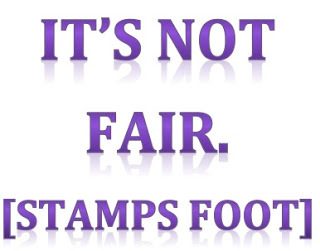 I am getting the teensiest bit irritated with people moaning that the general election last Thursday wasn't fair. Actually I am furious. We have everything from people whingeing on Facebook to violent protests all with the same message - that the outcome of the election wasn't fair. But what do they mean by 'wasn't fair'?
I am getting the teensiest bit irritated with people moaning that the general election last Thursday wasn't fair. Actually I am furious. We have everything from people whingeing on Facebook to violent protests all with the same message - that the outcome of the election wasn't fair. But what do they mean by 'wasn't fair'?All too often what they mean is 'Whoever I voted for should have won the election.' This clearly isn't democracy, it's dictatorship. Like it or not, the election was fair given the election system we have - it reflected the public's opinion, given that system.
'So the system's wrong!' said moaners and protestors shout from the rooftops. 'Give us proportional representation, so we can oust those hated Tories.' But here's the thing. I voted for PR in the referendum. (OK, technically AV is only semi-PR, but probably the best compromise.) Did all the people who are complaining? If everyone who wanted the Tories out had voted for PR, we would have got it. Yet 67% voted no. To be fair, Ed Miliband supported it, but I didn't see all the people who are now crying 'Unfair!' being equally fervent about encouraging us to vote 'Yes' in the referendum.
However, if all I did was go on about the people who only want PR when they don't get the election result they want, this would be a whinge too. So to end on a positive note, if you aren't happy with First Past the Post, please do pop over and sign the Electoral Reform Society's petition for a fairer voting system. Will this do anything? Not directly. I see no reason why the current government would go for another referendum during this term. But it will help demonstrate the undercurrent of interest that could lead to this being a significant issue in the next election.
Published on May 13, 2015 00:25
May 12, 2015
So You've Been Publicly Shamed review
 I have to admit straight away that I am a big fan of Jon Ronson's books. Combining the wide-eyed innocence of Louis Theroux with what seems significantly more of a conscience, Ronson wanders through a topic like America's psy-wars, terrorists or psychopaths in a way that manages to get some serious points across in a humorous and immensely readable way. Not to mention persuading a surprising range of people to be interviewed.
I have to admit straight away that I am a big fan of Jon Ronson's books. Combining the wide-eyed innocence of Louis Theroux with what seems significantly more of a conscience, Ronson wanders through a topic like America's psy-wars, terrorists or psychopaths in a way that manages to get some serious points across in a humorous and immensely readable way. Not to mention persuading a surprising range of people to be interviewed.This meant that I rushed out and bought his latest as soon as I could... and I 'm just a touch disappointed. Arguably this is simply due to the huge expectations from previous books. I think the problem is that the topic here - public shaming, primarily via social media - is less dramatic and more appealing to a relatively small audience. Because, like it or not, the Twittersphere may think it is the world, but in reality it's only a tiny part of it.
So, for instance, I had only vaguely heard of what's probably the biggest topic in the book, the shaming of writer Jonah Lehrer, and I had never heard of two of the other main subjects, Justine Sacco and Lindsey Stone, each of whom was pilloried online for make a tasteless joke.
The good news is that, as usual with Ronson, the topics really made you think as well being entertaining. After all, Lehrer lost his career essentially for a slight embroidery of the truth. (I found it amusing that he and Tipping Point author Malcolm Gladwell were set up as if they typified popular science writers, where I would consider them essentially New York journalists who write self-help books with a marginal overlap with scientific subjects - and who are paid in a different universe to popular science authors.) The Lehrer story did me wonder why, for instance, his slight misquotes of Bob Dylan were considered such an earth shattering thing when, for instance, Bill Bryson quite happily admits to making his travel non-fiction a little more interesting than reality, and films like The Imitation Game, 'based on true events' play fast and loose with historical facts, and don't get this kind of destructive attack. (Incidentally, I reviewed Lehrer's book, entirely unaware of the apparent media storm, and was a bit dismissive of it, in part because I find anything about Bob Dylan as boring as I find Dylan himself.)
Similarly, it's hard to understand why such a fuss was made about the two women making the bad jokes online when jokes in worse taste are seen by a far bigger audience daily on TV. What's more, the pile-on and slag off reaction seemed entirely in opposition to the free speech ethos that most social media enthusiasts espouse. And it one case, the opprobrium was entirely due to Twitter followers not spotting the existence of irony (nothing new, I admit). I enjoy using Twitter, but I've never come across the kind of Troll-like reaction. I'd heard of it, but assumed it was reserved for celebrities who should know better, but these were ordinary people, mangled by ridiculous over-reaction from those with too much time on their hands.
So Ronson does definitely bring out something very interesting - and also covers a range of other aspects from the common misunderstanding of the nature and behaviour of crowds to the semi-official existence of shaming in the justice system. However, it still felt a lightweight subject for a book - almost like a good feature article instead. Even so, any Ronson fans like me will still find it well worthwhile, and it should be enforced reading for anyone inclined to pile in and abuse others on social media.
You can find SYBPS at Amazon.co.uk and Amazon.com
Published on May 12, 2015 01:12
May 11, 2015
Why less can be more in a bookshop
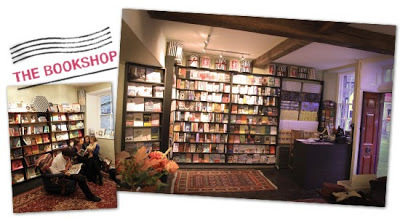 I have a confession that will make most authors' lib people - you know, the ones who unfriend you on Facebook if you confess to buying anything from Amazon - quake in their sandals: I find independent bookshops intimidating.
I have a confession that will make most authors' lib people - you know, the ones who unfriend you on Facebook if you confess to buying anything from Amazon - quake in their sandals: I find independent bookshops intimidating.I don't like their often dark, claustrophobia inducing interiors, and I don't like being talked to by staff. (Please note, Mary Portas, who regularly advises that good customer services involves welcoming customers and trying to help them. I don't want to be chatted to by a stranger. I'd rather help myself. If I want assistance I will ask for it. If your staff approach me, I will leave without making a purchase.)
So it was with some nervousness that I entered the Mad Hatter Bookshop in the pretty (or to put it another way, Cotswold tourist trappy) location of Burford, surprisingly close to my no-one-could-call-it-tourist-trappy home of Swindon. But I'm glad I did. I was even glad to be welcomed as I came in, though I admit if other shop owners said 'You're Brian Clegg, aren't you?' I would be happier with the concept, Ms Portas please note.
The reason I was particularly glad was that I discovered the real advantage a shop like this can have over Waterstones. (And, no, I don't mean the advantage of selling hats.) A largish Waterstones falls uncomfortably between two stools. It can't complete with an online store on stock. So if I want a specific book, half the time it's not there and I'm much better off going online. But, on the other hand, the Waterstones is too big to browse eclectically, so the customer tends to limit herself to the categories she always visits. And that's a real pity.
I think most of us have experienced the fun of browsing through the bookshelves of a friend with interesting tastes, discovering all sorts of unexpected pleasures. Looking through the shelves at Mad Hatter was very much like that. It was small enough that I could sensibly look through the entire stock, including subjects I'd never normally think of sampling. Even the fiction section wasn't big enough to be overwhelming. It had exactly that same feel of looking through the large collection belonging to a friend who has a very wide range of tastes. And that meant far more opportunity to discover something new and interesting.
I'm not saying that I have totally got over my nervousness of indie shops, particularly the ones that feature crystals or alternative therapies in the windows. But I will certainly be inclined to take the plunge more often.
You can find Mad Hatter on Burford's steeply sloping High Street, on the right as you look up the hill.
Published on May 11, 2015 00:48
May 7, 2015
Innovative science blogging
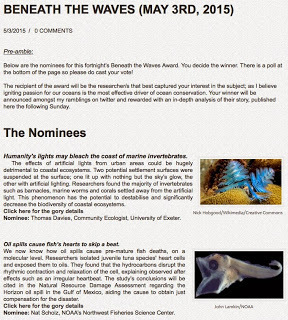 The first association many of us may have with marine biologists (stereotype alert) is that they only do it to get paid beach holidays in exotic locations, but at April's Guardian Science Communication Masterclass* I met Tom Evans, who is using his blog in an innovative way to get across what's new and interesting in his field. He is hosting a regular hot marine biology news award.
The first association many of us may have with marine biologists (stereotype alert) is that they only do it to get paid beach holidays in exotic locations, but at April's Guardian Science Communication Masterclass* I met Tom Evans, who is using his blog in an innovative way to get across what's new and interesting in his field. He is hosting a regular hot marine biology news award.The traditional approach, used by both science bloggers and the likes of Physics World is to do a regular roundup of interesting science stories. This is fine, but hardly original. Tom is essentially doing the same in his Beneath the Waves offering, but as well as giving edited highlights of what's interesting from the past fortnight, he gives readers the opportunity to vote for the (entirely nominal) Beneath the Waves Award. It's not a big change, but somehow it makes the whole thing significantly more engaging.
Of course all the research is valuable, and there is the argument that such an approach could trivialise the work, but I think if it's taken as a bit of fun that, apart from anything else, gives the reader an incentive to look at all the topics not just the ones of immediate interest, it gives the blog an interesting edge.
There are many ways to communicate science, and blogging is already a relatively innovative and flexible one. But this additional detail, for me, makes Tom Evans' approach a winner.
* The Science Communication Masterclass proved so popular it is being run again in July. Details here.
Published on May 07, 2015 01:10
May 6, 2015
Does architecture explain our problem with coalitions?
 A more representative House?In yesterday's paper there was a report of a poll saying that in the face of another no-overall-majority election, over 60% of respondents would prefer a proportional representation system. (Where were they when we voted on it?)
A more representative House?In yesterday's paper there was a report of a poll saying that in the face of another no-overall-majority election, over 60% of respondents would prefer a proportional representation system. (Where were they when we voted on it?)Yet many European countries manage quite happily with coalition after coalition. Why do we find them so difficult to deal with? My suspicion is it's a matter of architecture. Specifically, the psychological impact of the layout of the House of Commons.
Most parliaments are laid out in a curve, but by putting the two biggest parties directly facing each other, there is a requirement that we don't consider what would arguably be the only coalition that could genuinely argue that it had popular support - a Conservative/Labour coalition.
I know at this point supporters of both parties are probably falling to the floor and frothing at the mouth, but in many respects the parties aren't hugely distant, and a compromise between the two would ensure that we got through the maximum number of policies that had public support. Of course the negotiations would be painful - but politicians have to do something for their wages.
Whether or not it makes sense, I suspect we don't consider such a coalition - I haven't even heard it mentioned as a possibility - because of the seating plan of the House. And that isn't really a good enough reason.
Published on May 06, 2015 02:08
May 5, 2015
Lotteries, plane crashes and lightning
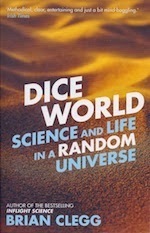 As anyone in the final week before an election knows, statistics are easy to misuse, whether accidentally or intentionally. It really quite saddens me to see friends, who know enough science not to massage figures to present the case they want, cherry picking, mislabelling and generally giving statistics as much mangling as they like as long as it shows the opposition in a bad light (it's odd, but they much more often seem to use stats to show how another party is bad, rather than the positives of their favoured party).
As anyone in the final week before an election knows, statistics are easy to misuse, whether accidentally or intentionally. It really quite saddens me to see friends, who know enough science not to massage figures to present the case they want, cherry picking, mislabelling and generally giving statistics as much mangling as they like as long as it shows the opposition in a bad light (it's odd, but they much more often seem to use stats to show how another party is bad, rather than the positives of their favoured party).Occasionally I point out one of these errors, but this tends to get me labelled an enemy of the cause, so it probably isn't worth it. However, there's another example of statistics being manipulated where I shouldn't feel the wroth of political sensibilities, and that is on the matter of lotteries.
For some reason those with a scientific bent love to produce a flurry of probabilities that show how entering lotteries is for suckers, because the odds are so astronomical. As I point out in Dice World , my book on probability and randomness, this is often due to a total misunderstanding of the nature of entering a lottery. Seen as an investment, it is certainly ridiculous. However, seen as a game, it's a different matter. What lottery players pay for is not the statistical benefit of the prize times the chance of winning - an unimpressive payback - but the anticipation. It's about the chase, more than the kill.
Another popular way to label lottery players mathematical losers is to compare the odds of winning with those of being in a fatal plane crash, or being struck by lightning, which are considered to be on the same order of magnitude. Here there's a double error. As well as not understanding the gaming nature of lottery play, these comparisons aren't even good probability, for several reasons.
First, the comparison is only ever made with the probability of winning the jackpot. Pretty well all lottery games have a range of prizes depending how many balls you match. Matching three balls is significantly more likely to occur than six. Okay the prize is a lot less, but the fact remains that with the UK Lotto, for instance, you can win not with the usual 1 in 14 million chance given for the jackpot, but more like 1 in 54 for all the possible ways of winning. That's a very different figure.
Secondly, the UK lottery has several games. If instead of playing the Lotto you play Thunderball there is a significantly better chance of winning. Okay, the main prize is only £500,000 - but 'only' applied to £500,000 is something of an oddity. Here the jackpot remains a painful 1 in 8 million away (though this beats Lotto), but the chances of winning plunge to the very accessible 1 in 13. if the naysayers are telling me that's my chance of being struck by lightning, someone up there doesn't like me.
And finally, in making the comparison with messy ways to die, our statistical misery guts are committing a classic statistical error - applying a statistic from a skewed population to everyone in the population. If you buy a lottery ticket, the stated statistics apply to your single ticket. But you can buy more than one lottery ticket and change those statistics. (With Thunderball, for instance, you can guarantee a win with 14 tickets.) Those struck by lightning or in a plane crash don't have an equivalent option. Even more interestingly, the statistics for these two hazards aren't those that apply to most of the population at large - and are way out for many individuals.
Take the chances of being in a plane crash. Clearly this depends on how frequently you fly. As some people fly weekly or even daily, their chances will push the averaged probability up significantly. If you only fly for a holiday once a year, your chances will be significantly lower. Even more so for me - I've flown once in the last 25 years, and have no intention of flying again. So don't tell me the chances of my being in a plane crash are the same as my winning the lottery.
A similar argument applies to being struck by lightning. People who spend a lot of time in at-risk environments are more likely to be struck than those who avoid exposed high places. So golfers and national park rangers, for instance, will have a significantly higher risk than a city dweller, pushing up the apparent risk.
I'm not denying that you are vanishingly unlikely to buy a ticket that will win the jackpot in a major lottery. But I do think those who use probability and statistics to sneer at lottery players, ought to think through their maths (and psychology) a little more.
Published on May 05, 2015 01:28
May 1, 2015
An absorbing story
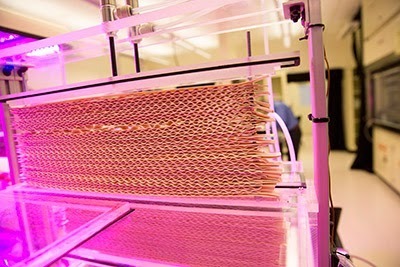 Experimental carbon capture panelFor the last few years we've put climate change on a back burner because of the financial crisis. But it is not going to go away. The Green Party wants us all to abandon the use of oil and gas to move to low carbon sources of energy generation like wind and solar (they conveniently forget that nuclear is low carbon). However, like most of the Green Party's manifesto, this is a desire based more on hope than an understanding of human beings.
Experimental carbon capture panelFor the last few years we've put climate change on a back burner because of the financial crisis. But it is not going to go away. The Green Party wants us all to abandon the use of oil and gas to move to low carbon sources of energy generation like wind and solar (they conveniently forget that nuclear is low carbon). However, like most of the Green Party's manifesto, this is a desire based more on hope than an understanding of human beings.Frankly, a much better way of getting people to do the right thing than forcing the hair shirt option on them is to make it easy. So, for instance, I would leap at having an electric car as a runaround if you could buy a Leaf or a Zoe for the price of an Aygo. But charge three times as much and I'm not going to be in the queue.
When it comes to power generation from oil and gas (and even, dare we mention it, coal), the Cinderella technology is carbon capture and storage (CCS). The developers of CCS recognise that we are not going to ignore out fossil fuel reserves, but that it should be possible to use them while at the same time taking carbon dioxide out of the atmosphere, so the net contribution is zero or even negative. At one time the British government was quite enthusiastic about CCS... but then withdrew most of the funding.
There are a number of mechanisms for storing carbon dioxide away when it has been captured, but we don't have very efficient means of doing the capture in the first place. So I was interested to see this piece in Physics World on a synthetic material for capturing CO2 from the atmosphere. Remarkably, this stuff is 1,000 times more efficient than trees at sucking in the carbon dioxide. And let's face it, trees are very slow absorbers (which is one of the problems with using trees in carbon offsetting programmes).
The substance used is a resin that collect between 10 and 50 per cent of the CO2 passing over a collection panel made from it. Of course this doesn't just remove the CO2 from a power station exhaust - but it doesn't matter. Carbon dioxide is carbon dioxide. As long as you can hoover it up fast enough, you can balance out the output.
Apparently you would need about 100 million large collectors to totally counter the world's carbon emissions - but that's a huge step forward, and even reducing emissions by a small percentage would help.
The biggest problem with this approach is dumping the CO2 once it is captured. The collectors would become saturated in about an hour, needing replacing in some kind of conveyor system that takes them to deposit their load, when they can be reused. The CO2 naturally emerges from the resin in a humid atmosphere (so the CCS devices would have to be sited in dry locations) - it could then be taken away in a number of ways.
The concept isn't perfect. Although releasing in a damp atmosphere is easy to do, it also limits their value in, say, the UK. And there would be no point using such an approach unless the energy used in swapping out the panels and dumping and storing the CO2 was a lot less than the energy produced in emitting the carbon dioxide in the first place.
Even so, there can be little doubt that this is a step in the right direction.
This has been a green heretic production.
Published on May 01, 2015 02:26



